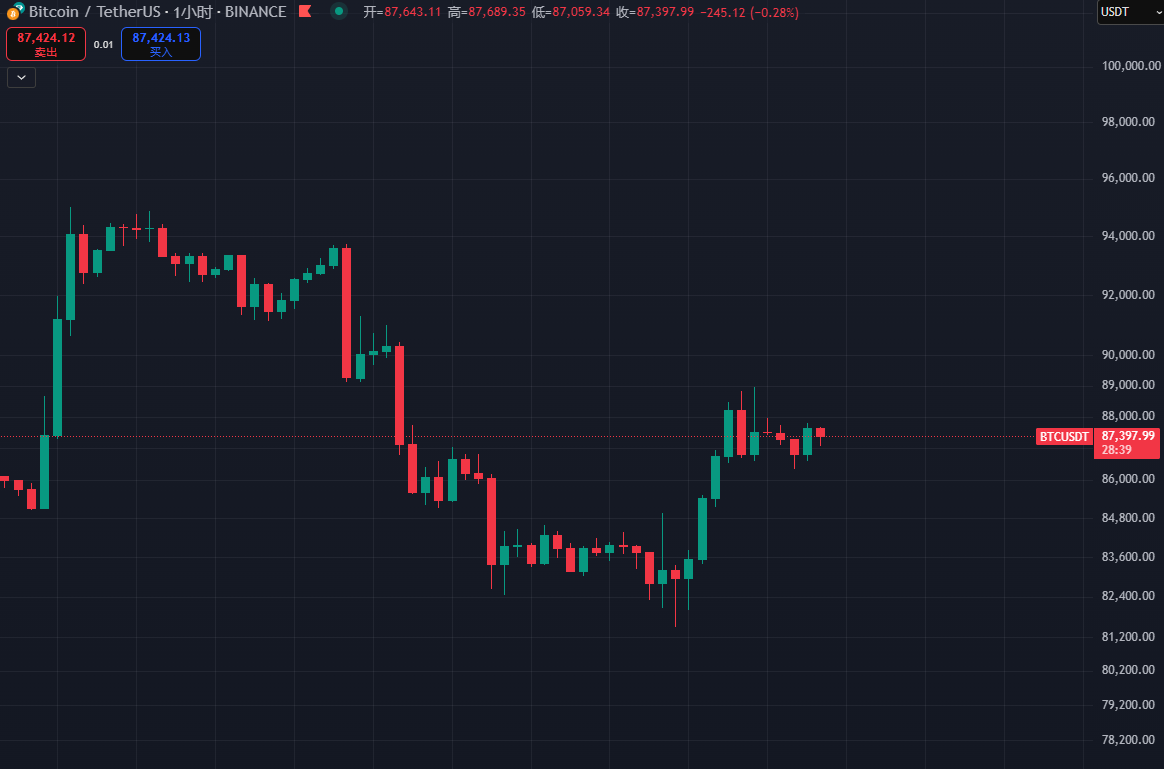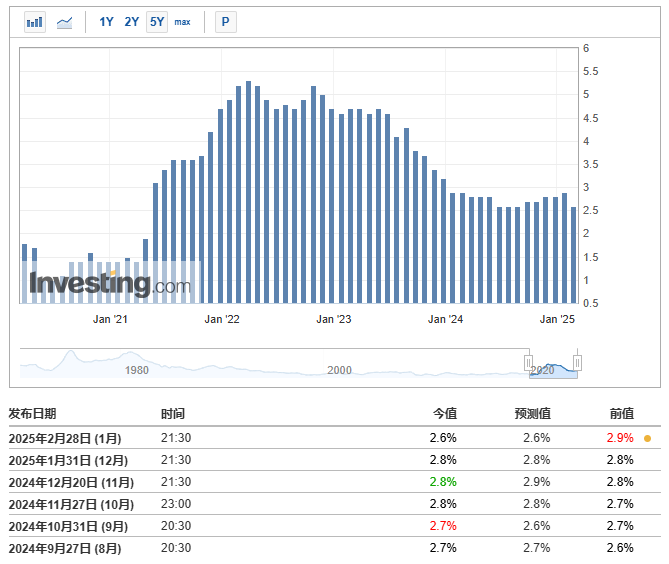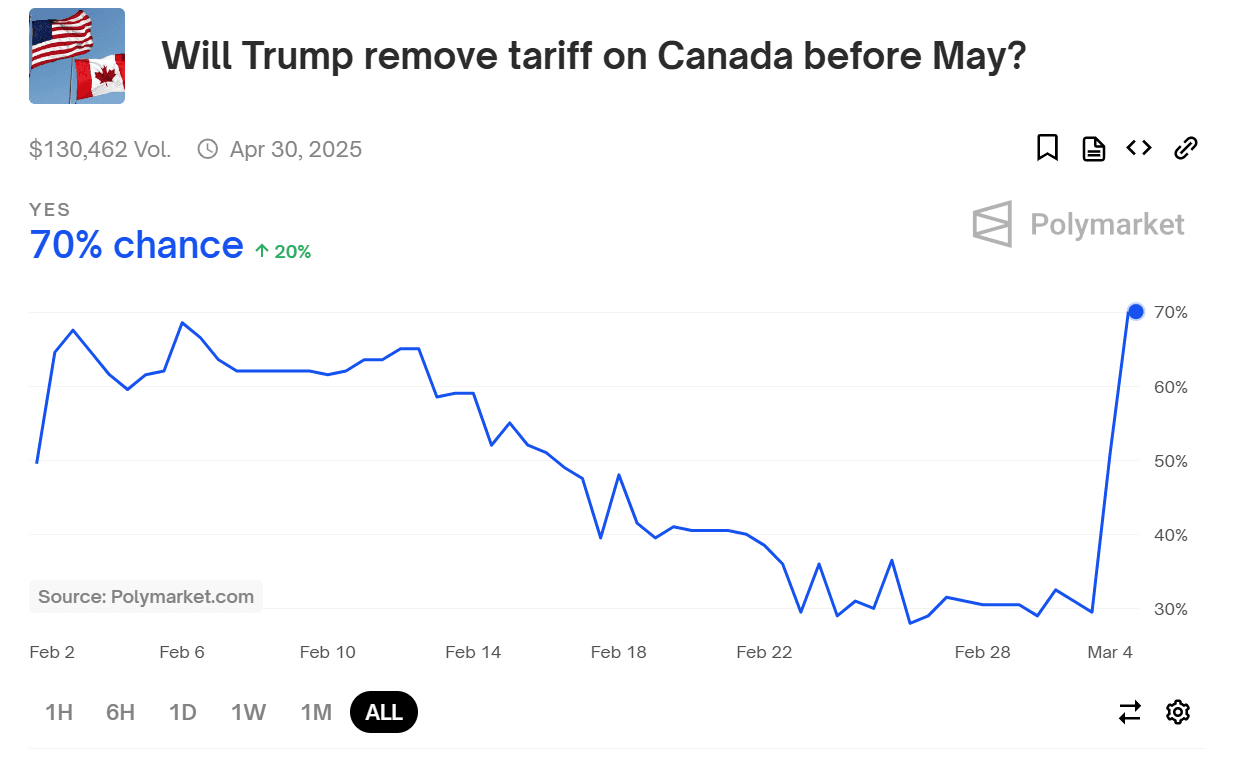 This night was filled with the undertones of political maneuvering, and also exposed the crypto market's extreme sensitivity to policy shifts. While traditional assets shivered in the shadow of stagflation, Bitcoin once again demonstrated its unique pricing logic: it is a beneficiary of the easing of geopolitical risks, and also serves as a weathervane for monetary policy expectations. However, behind this price frenzy, a deeper question has quietly emerged on Wall Street's agenda - faced with Trump's erratic tariff dice, the Federal Reserve's murky interest rate policy, and the specter of stagflation unseen in 50 years, what future is the market bracing for?
### **Core Dilemma: The Federal Reserve's Difficult Choice**
The Federal Reserve is facing a delicate "tightrope walking" challenge: slowing economic growth and inflationary pressures coexist, and the uncertainty of trade policy adds more variables. This situation leaves traditional monetary policy in a dilemma:
- **Rate Hike Logic**: If the priority is to curb inflation (core PCE still at 2.6%, higher than the 2% target), rate hikes may exacerbate the economic downturn and even trigger a recession.
- **Rate Cut Logic**: If the focus is on preserving growth (GDPNow forecasts a 2.8% contraction in Q1), rate cuts risk losing control of inflation and reigniting price increases.
This night was filled with the undertones of political maneuvering, and also exposed the crypto market's extreme sensitivity to policy shifts. While traditional assets shivered in the shadow of stagflation, Bitcoin once again demonstrated its unique pricing logic: it is a beneficiary of the easing of geopolitical risks, and also serves as a weathervane for monetary policy expectations. However, behind this price frenzy, a deeper question has quietly emerged on Wall Street's agenda - faced with Trump's erratic tariff dice, the Federal Reserve's murky interest rate policy, and the specter of stagflation unseen in 50 years, what future is the market bracing for?
### **Core Dilemma: The Federal Reserve's Difficult Choice**
The Federal Reserve is facing a delicate "tightrope walking" challenge: slowing economic growth and inflationary pressures coexist, and the uncertainty of trade policy adds more variables. This situation leaves traditional monetary policy in a dilemma:
- **Rate Hike Logic**: If the priority is to curb inflation (core PCE still at 2.6%, higher than the 2% target), rate hikes may exacerbate the economic downturn and even trigger a recession.
- **Rate Cut Logic**: If the focus is on preserving growth (GDPNow forecasts a 2.8% contraction in Q1), rate cuts risk losing control of inflation and reigniting price increases.
 The divergence in market expectations stems from the contradictory economic data. Here are the core supports for the two expectations:
**Rate Cut This Year**
Consecutive contraction in manufacturing PMI, consumer confidence plunging to 67, sticky inflation (PCE 2.8%), resilient employment (non-farm payrolls beating expectations)
**Rate Hike This Year**
Inflation above target, strong job market, GDP contraction risk, steep yield curve
This "Schrödinger's interest rate" state has led the market to both bet on rate cuts (the liquidity pool for a June rate cut reached $3.8 billion) and not abandon rate hike expectations (short positions in interest rate futures have risen).
### **The "Dice Game" of Tariffs**
This morning, U.S. Commerce Secretary Lutnik's remarks ignited the market's imagination. He said "the President is willing to find a middle ground on the tariff issue," and with that, the probability of the U.S.-Canada trade war ending before May on Polymarket soared from 50% to 70%, while Bitcoin broke through $87,000 and crude oil fell to a four-month low. Tariff easing seems to be able to ease supply chain tensions and lower inflation expectations, paving the way for rate cuts.
The divergence in market expectations stems from the contradictory economic data. Here are the core supports for the two expectations:
**Rate Cut This Year**
Consecutive contraction in manufacturing PMI, consumer confidence plunging to 67, sticky inflation (PCE 2.8%), resilient employment (non-farm payrolls beating expectations)
**Rate Hike This Year**
Inflation above target, strong job market, GDP contraction risk, steep yield curve
This "Schrödinger's interest rate" state has led the market to both bet on rate cuts (the liquidity pool for a June rate cut reached $3.8 billion) and not abandon rate hike expectations (short positions in interest rate futures have risen).
### **The "Dice Game" of Tariffs**
This morning, U.S. Commerce Secretary Lutnik's remarks ignited the market's imagination. He said "the President is willing to find a middle ground on the tariff issue," and with that, the probability of the U.S.-Canada trade war ending before May on Polymarket soared from 50% to 70%, while Bitcoin broke through $87,000 and crude oil fell to a four-month low. Tariff easing seems to be able to ease supply chain tensions and lower inflation expectations, paving the way for rate cuts.
 Just as the market was catching its breath from the tariff easing, Moody's chief economist Mark Zandi's warning came like a thunderclap: "The U.S. may face stagflation not seen in 50 years." This evokes memories of Federal Reserve Chairman Paul Volcker's iron fist in the 1980s - to curb double-digit inflation, he had raised interest rates to 20%, even at the cost of an economic recession. Now, the Atlanta Fed's GDPNow model shows that U.S. GDP in the first quarter may contract by 2.8%, while the core PCE price index remains stubbornly at 2.6%.
This combination of "economic contraction + sticky inflation" is like giving the Federal Reserve an unsolvable equation: if the priority is to suppress inflation, rate hikes may accelerate the economic downturn; if the focus shifts to preserving growth, rate cuts risk losing control of prices. In the Chicago Mercantile Exchange's "Fed Watch" tool, institutions are betting real money on the two futures: the liquidity pool for a June rate cut has reached $3.8 billion, while the short positions in interest rate futures are also rising in tandem.
Different assets are also viewing the tariff issue and recession from different angles:
- The **bond market** is pricing in the classic script of "economic slowdown → rate cuts to rescue the market"
- The **breakout of gold above $2,140** reflects the dual anxiety of "currency depreciation + safe-haven demand"
- The **sell-off of tech stocks** is a valuation adjustment for "higher rates to persist longer"
- The **volatility in the crypto market** implies a need to hedge against policy uncertainty
As former Goldman Sachs CEO Lloyd Blankfein said, "When the narratives of all asset classes are self-consistent, the turning point is often not far away."
### **The Art of Tightrope Walking for the Federal Reserve**
At the center of the storm, the Federal Reserve is using the "art of ambiguity" to deal with multiple crises. St. Louis Fed President Mussalam recently emphasized the "downside economic risks," opening the imagination for rate cuts; while Cleveland Fed President Mester still insists that "more evidence of inflation cooling is needed." This "hawkish and dovish" stance is akin to the quantum superposition of the central bank - before the observation (the policy meeting), it may either raise or cut rates.
The deeper dilemma lies in the data fog:
- Core PCE in January was 2.6% year-on-year, still above the 2% target
- But the consumer confidence index plunged to 67, a new five-month low
- Non-farm employment has exceeded expectations for three consecutive months
- However, working hours have dropped to 34.1 hours, suggesting companies are cutting back on hiring
This contradiction has trapped the Federal Reserve in the "Schrödinger's interest rate" dilemma. Deutsche Bank's confidence in "no rate cuts this year" comes from its trust in the resilience of the job market; while traders betting on a May rate cut are gambling on the manufacturing PMI falling below the boom-bust line and triggering a policy shift.
### **The Thermometer Effect of the Crypto Market**
In this macroeconomic puzzle, the trajectory of Bitcoin has become a unique sentiment barometer. When Lutnik released the signal of tariff easing, Bitcoin surged 3.4% in two hours, and on-chain data showed that an institutional address sold 12,000 BTC around $87,000, only to be instantly absorbed - suggesting that off-market capital is rushing in on the positive news.
"Crypto assets are evolving a dual personality," said Bloomberg crypto analyst Jamie Coutts. "It is both a safe haven for geopolitical risks and a leading indicator of liquidity expectations." This characteristic was vividly displayed on March 4th: while traditional markets trembled in the fear of stagflation, Bitcoin's counter-trend strength may be foretelling that the Federal Reserve will ultimately choose to inject liquidity into the market.
### **Navigating the Fog: Finding the Lowest Common Denominator**
Investors standing at the crossroads may need to seek certainty from the contradictions:
Just as the market was catching its breath from the tariff easing, Moody's chief economist Mark Zandi's warning came like a thunderclap: "The U.S. may face stagflation not seen in 50 years." This evokes memories of Federal Reserve Chairman Paul Volcker's iron fist in the 1980s - to curb double-digit inflation, he had raised interest rates to 20%, even at the cost of an economic recession. Now, the Atlanta Fed's GDPNow model shows that U.S. GDP in the first quarter may contract by 2.8%, while the core PCE price index remains stubbornly at 2.6%.
This combination of "economic contraction + sticky inflation" is like giving the Federal Reserve an unsolvable equation: if the priority is to suppress inflation, rate hikes may accelerate the economic downturn; if the focus shifts to preserving growth, rate cuts risk losing control of prices. In the Chicago Mercantile Exchange's "Fed Watch" tool, institutions are betting real money on the two futures: the liquidity pool for a June rate cut has reached $3.8 billion, while the short positions in interest rate futures are also rising in tandem.
Different assets are also viewing the tariff issue and recession from different angles:
- The **bond market** is pricing in the classic script of "economic slowdown → rate cuts to rescue the market"
- The **breakout of gold above $2,140** reflects the dual anxiety of "currency depreciation + safe-haven demand"
- The **sell-off of tech stocks** is a valuation adjustment for "higher rates to persist longer"
- The **volatility in the crypto market** implies a need to hedge against policy uncertainty
As former Goldman Sachs CEO Lloyd Blankfein said, "When the narratives of all asset classes are self-consistent, the turning point is often not far away."
### **The Art of Tightrope Walking for the Federal Reserve**
At the center of the storm, the Federal Reserve is using the "art of ambiguity" to deal with multiple crises. St. Louis Fed President Mussalam recently emphasized the "downside economic risks," opening the imagination for rate cuts; while Cleveland Fed President Mester still insists that "more evidence of inflation cooling is needed." This "hawkish and dovish" stance is akin to the quantum superposition of the central bank - before the observation (the policy meeting), it may either raise or cut rates.
The deeper dilemma lies in the data fog:
- Core PCE in January was 2.6% year-on-year, still above the 2% target
- But the consumer confidence index plunged to 67, a new five-month low
- Non-farm employment has exceeded expectations for three consecutive months
- However, working hours have dropped to 34.1 hours, suggesting companies are cutting back on hiring
This contradiction has trapped the Federal Reserve in the "Schrödinger's interest rate" dilemma. Deutsche Bank's confidence in "no rate cuts this year" comes from its trust in the resilience of the job market; while traders betting on a May rate cut are gambling on the manufacturing PMI falling below the boom-bust line and triggering a policy shift.
### **The Thermometer Effect of the Crypto Market**
In this macroeconomic puzzle, the trajectory of Bitcoin has become a unique sentiment barometer. When Lutnik released the signal of tariff easing, Bitcoin surged 3.4% in two hours, and on-chain data showed that an institutional address sold 12,000 BTC around $87,000, only to be instantly absorbed - suggesting that off-market capital is rushing in on the positive news.
"Crypto assets are evolving a dual personality," said Bloomberg crypto analyst Jamie Coutts. "It is both a safe haven for geopolitical risks and a leading indicator of liquidity expectations." This characteristic was vividly displayed on March 4th: while traditional markets trembled in the fear of stagflation, Bitcoin's counter-trend strength may be foretelling that the Federal Reserve will ultimately choose to inject liquidity into the market.
### **Navigating the Fog: Finding the Lowest Common Denominator**
Investors standing at the crossroads may need to seek certainty from the contradictions:- Time dimension: The tariff negotiations before May and the March PCE data will become the key verification points for the policy shift
- Spatial dimension: A core PCE of 2.5% is like a gravitational field, the closer to this target, the more unobstructed the rate cut channel
- Political dimension: Trump's "art of negotiation" may continue to create volatility, but the election year is usually wary of economic recession
- Market dimension: The steep yield curve of US Treasuries (the widening spread between 2-10 year yields) is often a precursor to recession, and needs to be closely monitored
As Bridgewater's Dalio advises: "Don't ask what the central bank will do, but what they have to do." When the specter of stagflation and the risk of recession emerge simultaneously, the "dual mandate" of the Fed is subtly tilting - perhaps it is this very uncertainty itself that constitutes the most certain investment theme for 2024.
The morning mist will eventually dissipate, but before the policymakers pull the trigger, the market's long-short battle will continue to rage in this gray area. The only thing clear is that in this era of collision between traditional order and digital civilization, no single indicator can monopolize the truth, and only by maintaining awe for the contradictions themselves can one seize the opportunity in the volatility.





